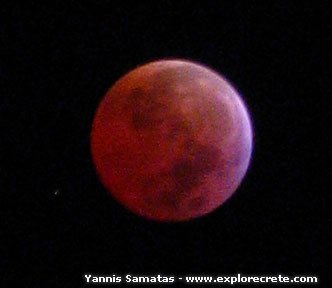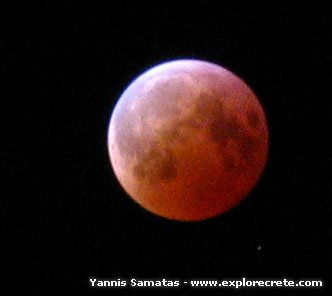Full-moon eclipse visible from Crete
Yesterday millions of people across the world watched an impressive succession of colours cross the face of the Moon. In Greece the total lunar eclipse was visible between 22.18 on Saturday night and 04.23 on Sunday morning of March 4, 2007. The Moon was dipped in the deep coppery hues caused by atmospheric refraction.
When the Moon enters the Earth’s shadow completely, the refracted sunlight is still able to reach the Moon and light it a little. This light passes through the deep layers of the Earth’s atmosphere, which filters the blue end of the spectrum more, and so the remaining light is deep brown, red, orange or yellow.

– The moon completely covered by the shadow of Earth –
If the Earth had no atmosphere, the Moon would disappear completely during a total eclipse. The exact colour depends on the amount of dust and clouds in the Earth’s upper atmosphere.
During a total eclipse, the Moon does not become completely dark but takes on a reddish colour due to the diffraction of light in the earth’s atmosphere. The hue and intensity of this reddish colour changes during the eclipse itself, and also varies from one eclipse to the next. The phenomenon is then reversed until the bright full Moon shines forth again as usual.

– The Moon gradually started to emerge from the Earth’s shadow –